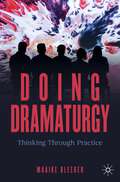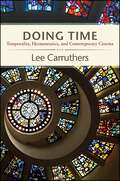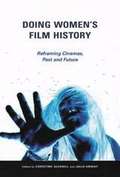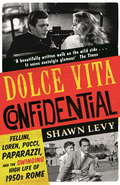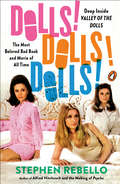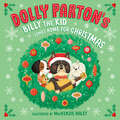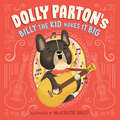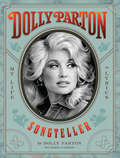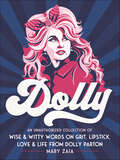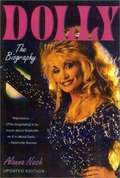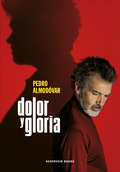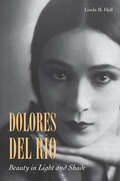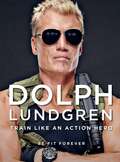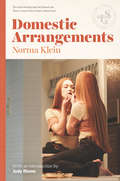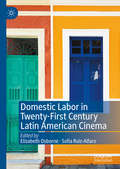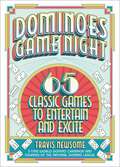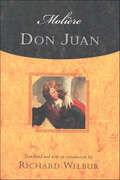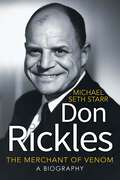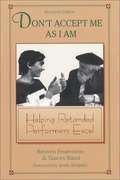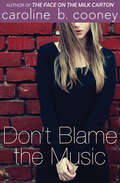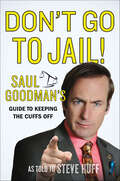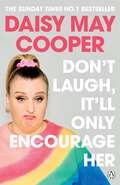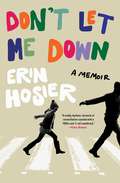- Table View
- List View
Doing Dramaturgy: Thinking Through Practice (New Dramaturgies)
by Maaike BleekerThis book explores how doing dramaturgy is informed by today’s highly diverse field of theatre, dance and performance. It does so in dialogue with fourteen performances and their makers, tracing the thinking-through-practice that underlies these creations. The first part of the book looks at how dramaturgs participate in practices of thinking-making and introduces a dramaturgical mode of looking at performances and the processes in which they are created. The second part of the book discusses the performances and creative processes of Manuela Infante, Julian Hetzel, Ivo van Hove, Anouk van Dijk, Falk Richter, Milo Rau, Kris Verdonck, Death Centre, Hotel Modern, Jr.cE.sA.r , Emio Greco and Pieter C. Scholten, Dries Verhoeven, the LGB Society of Mind, Sanja Mitrović, and Amanda Piña. Showing how ways of making and ways of doing dramaturgy mutually inform each other, this book is an essential resource for students and others aspiring to develop their own dramaturgical practice.
Doing Time: Temporality, Hermeneutics, and Contemporary Cinema (SUNY series, Horizons of Cinema)
by Lee CarruthersDoing Time addresses two areas of interest in recent film study—film temporality and film philosophy—to propose an innovative theorization of cinematic time that sees it as a dynamic process of engagement, or something we do as viewers. This active relation to cinematic time, which discloses a film's temporal character, is called its "timeliness." Here it is traced across a range of fascinating case studies from Hollywood and the global art cinema, uncovering each film's characteristic way of "doing time." Throughout, the ambiguities of filmic time are held as powerful attractions as they modulate film viewing: such pauses, gaps, repetitions, and stretches of time illuminate a living field that extends from viewing activity.Drawing on the writings of French film critic and theorist André Bazin, as well as the phenomenology of Martin Heidegger and Maurice Merleau-Ponty, Lee Carruthers forwards a claim about the value of cinematic time for thinking. She also raises the tasks of film analysis and interpretation to renewed visibility. By prioritizing the viewer's experience of filmic temporality, and offering a rich vocabulary for describing this exchange, Carruthers articulates a new sphere of theoretical inquiry that invites film viewers (and readers) to participate.
Doing Women's Film History: Reframing Cinemas, Past and Future
by Julia Knight Jane Gaines Christine Gledhill Monica Dall'AstaResearch into and around women's participation in cinematic history has enjoyed dynamic growth over the past decade. A broadening of scope and interests encompasses not only different kinds of filmmaking--mainstream fiction, experimental, and documentary--but also practices--publicity, journalism, distribution and exhibition--seldom explored in the past. Cutting-edge and inclusive, Doing Women's Film History ventures into topics in the United States and Europe while also moving beyond to explore the influence of women on the cinemas of India, Chile, Turkey, Russia, and Australia. Contributors grapple with historiographic questions that cover film history from the pioneering era to the present day. Yet the writers also address the very mission of practicing scholarship. Essays explore essential issues like identifying women's participation in their cinema cultures, locating previously unconsidered sources of evidence, developing methodologies and analytical concepts to reveal the impact of gender on film production, distribution and reception, and reframing film history to accommodate new questions and approaches. Contributors include: Kay Armatage, Eylem Atakav, Karina Aveyard, Canan Balan, Cécile Chich, Monica Dall'Asta, Eliza Anna Delveroudi, Jane M. Gaines, Christine Gledhill, Julia Knight, Neepa Majumdar, Michele Leigh, Luke McKernan, Debashree Mukherjee, Giuliana Muscio, Katarzyna Paszkiewicz, Rashmi Sawhney, Elizabeth Ramirez Soto, Sarah Street, and Kimberly Tomadjoglou.
Dolce Vita Confidential: Fellini, Loren, Pucci, Paparazzi and the Swinging High Life of 1950s Rome
by Shawn LevySUNDAY TIMES FILM BOOK OF THE YEAR 'Uproariously readable ... Levy is a master of the group biography' Sunday Times'Teeming with satisfying gossipy details' Guardian'Exalts the intoxicating, beguiling dreaminess of Rome in its celluloid heyday' TLS 1950s Rome. From the ashes of war, the Eternal City is reborn as the epicentre of film, style and boldfaced libertinism. Movie stars including Ingrid Bergman, Audrey Hepburn and Elizabeth Taylor flock to Cinecittà studio and mix with blue bloods and bohemians at the bars on Via Veneto, while behind them trail street photographers in pursuit of the most unflattering and dramatic portraits of fame. In a fast-paced, kaleidoscopic narrative, Shawn Levy recreates Rome's ascent with compelling tales of its glitterati and artists, down to every last outrageous detail of the city's magnificent transformation into 'Hollywood on the Tiber'.
Dolls! Dolls! Dolls!: Deep Inside Valley of the Dolls, the Most Beloved Bad Book and Movie of All Time
by Stephen Rebello"A blissful treasure trove of gossipy insider details that Dolls fans will swiftly devour."--Kirkus ReviewsThe unbelievable-but-true, inside story of Jacqueline Susann's pop culture icon Valley of the Dolls--the landmark novel and publishing phenomenon, the infamous smash hit film ("the best worst movie ever made"), and Dolls's thriving legacy todaySince its publication in 1966, Jacqueline Susann's Valley of the Dolls has reigned as one of the most influential and beloved pieces of commercial fiction. Selling over thirty-one million copies worldwide, it revolutionized overnight the way books got sold, thanks to the tireless and canny self-promoting Susann. It also generated endless speculation about the author's real-life models for its larger-than-life characters. Turned in 1967 into an international box-office sensation and morphing into a much-beloved cult film, its influence endures today in everything from films and TV shows to fashion and cosmetics tributes and tie-ins. Susann's compulsive readable exposé of three female friends finding success in New York City and Hollywood was a scandalous eye-opener for its candid treatment of sex, naked ambition, ageism, and pill-popping, and the big screen version was one of the most-seen and talked-about movies of the time.Dolls! Dolls! Dolls! digs deep into the creation of that hugely successful film--a journey nearly as cut-throat, sexually-charged, tragic, and revelatory as Susann's novel itself--and uncovers how the movie has become a cherished, widely imitated camp classic, thanks to its over-the-top performances, endlessly quotable absurd dialogue, outré costumes and hairdos, despite the high aspirations, money, and talent lavished on it. Screenwriter-journalist-film historian Stephen Rebello has conducted archival research and new interviews to draw back the velvet curtain on the behind-the-scenes intrigue, feuds and machinations that marked the film's production. In doing so, he unveils a rich, detailed history of fast-changing, late 1960s Hollywood, on screen and off.
Dolly Parton's Billy the Kid Comes Home for Christmas
by Erica S. Perl Dolly PartonIn this standalone sequel to instant New York Times Bestseller Dolly Parton's Billy the Kid Makes it Big, Dolly's favorite god-dog is back with a tale about the true meaning of Christmas.French bulldog Billy the Kid is one lucky pup. He has everything he could ever want: a place in Nashville, a great band, and even a cross-country tour. It's all totally tail-riffic...but he can't help but feel that something's missing. When Billy's band is scheduled to perform at Barkafeller Center on Christmas Day, he'll have to decide what matters most to him: fame or family?Written by Dolly Parton with Erica S. Perl and illustrated by MacKenzie Haley, this is a hilarious yet heartwarming picture book about the importance of family, friendship, and of course, paw-some music.
Dolly Parton's Billy the Kid Makes It Big
by Erica S. Perl Dolly PartonFrom the legendary Dolly Parton comes a story about her god-dog and Instagram personality, Billy the Kid, who is hoping to make it big as a country music star in Nashville, Tennessee. <p><p>French bulldog Billy the Kid was born with an ear for music. And not just any music. He loves barking to the beat of country music! So Billy sets out to Nashville to sing his heart out.But when he meets some big bullies at the Battle of the Bow-wows, Billy worries he's barking up the wrong tree. He'll need his favorite songs ("Jowlene" and "I Will Pawlways Love You," of course), a group of scrappy new friends, and his favorite country music star to regain self-confidence and be the star he always knew he could be. <p><p>Written by Dolly Parton with Erica S. Perl and illustrated by MacKenzie Haley, this is a delightful picture book about standing up to people (and dogs) who put you down and finding the drive to achieve your dreams.
Dolly Parton, Songteller: My Life in Lyrics
by Robert K. Oermann Dolly PartonDolly Parton, Songteller: My Life in Lyrics is a landmark celebration of the remarkable life and career of a country music and pop culture legend.As told by Dolly Parton in her own inimitable words, explore the songs that have defined her journey. Illustrated throughout with previously unpublished images from Dolly Parton's personal and business archives.Mining over 60 years of songwriting, Dolly Parton highlights 175 of her songs and brings readers behind the lyrics.• Packed with never-before-seen photographs and classic memorabilia• Explores personal stories, candid insights, and myriad memories behind the songsDolly Parton, Songteller: My Life in Lyrics reveals the stories and memories that have made Dolly a beloved icon across generations, genders, and social and international boundaries. Containing rare photos and memorabilia from Parton's archives, this book is a show-stopping must-have for every Dolly Parton fan.• Learn the history behind classic Parton songs like "Jolene," "9 to 5," "I Will Always Love You," and more.• The perfect gift for Dolly Parton fans (everyone loves Dolly!) as well as lovers of music history and countryAdd it to the shelf with books like Coat of Many Colors by Dolly Parton, The Beatles Anthology by The Beatles, and Born to Run by Bruce Springsteen.
Dolly Parton: Country Goin' to Town (Women of Our Time)
by Susan SaundersDolly said every country girl dreamed of goin' to town--but Dolly knew how to make her dreams come true. She grew up in poverty in the heart of the Smoky Mountains in Tennessee. Dolly was composing music before she could write and singing as soon as she could speak, and always believing in herself. Singing in her uncle's backwoods church, on 4:00 a.m. radio programs, and finally in the Grand Ole Opry in Nashville, Dolly was heading for the heights of country music stardom. Her heart remains in the country, but Dolly Parton has become a star acclaimed throughout the world.
Dolly: An Unauthorized Collection of Wise & Witty Words on Grit, Lipstick, Love & Life from Dolly Parton
by Mary ZaiaCompiled by Mary Zaia, Dolly: An Unauthorized Collection of Wise & Witty Words on Grit, Lipstick, Love & Life from Dolly Parton is a book of quotes from America’s most beloved country singer.We all need a dose of Dolly in our lives. Whether it’s her warmth and generosity, her humble roots and down-home values, her gifts to film and music, or her unforgettable style and humor, Dolly Parton has plenty of life secrets to share. Enjoy this collection of her wisest quotes, funniest cracks, and encouraging words for living life right.· Nearly 150 Dolly quotes on living with big dreams and an open heart· Empowerment, strength, and confidence whenever you need it· Get inspired to be boldly you, just like Dolly!
Dolly: The Biography
by Alanna NashThis comprehensive look at the life of country music superstar Dolly Parton covers her poor but loving upbringing through her recent induction into the Country Music Association Hall of Fame. Based on extensive interviews with a host of Nashville's biggest stars such as BARBARA MANDRELL, MARTY ROBBINS, and EDDIE RABBITT, as well as with the Parton family and Dolly herself, this intimate biography charts the legendary singer's life from the backwoods of Tennessee to the footlights of the Grand Ole Opry and beyond. This updated edition looks at the country singer's endeavors from the 1980s through today, a period in which Parton opened her own theme park, Dollywood; flirted with pop music; and returned to her rural mountain roots with the release of three critically acclaimed bluegrass albums--Hungry Again in 1997, The Grass Is Blue in 1999, and Little Sparrow in 2001. Nash also takes readers into the studio for the release of Dolly's most recent record, the much-lauded Halos & Horns.
Dolor y gloria
by Pedro AlmodóvarLa película más personal de Pedro Almodóvar. El libro más repleto de extras. Salvador Mallo es un veterano director de cine aquejado de múltiples dolencias, pero el peor de sus males es la incapacidad para seguir rodando. La mezcla de medicamentos y drogas hace que Salvador pase la mayor parte del día postrado. Este estado de duermevela le traslada a una época de su vida que nunca visitó como narrador: su infancia en los años sesenta, cuando emigró con sus padres a un pueblo de Valencia en busca de prosperidad. También se le vuelve a aparecer su primer amor adulto, ya en el Madrid de los ochenta, y el dolor que supuso la ruptura. Salvador se refugia en la escritura como única terapia para olvidar lo inolvidable. Ese ejercicio lo devuelve al temprano descubrimiento del cine, cuando las películas se proyectaban sobre un muro encalado, al aire libre, con olor a pis, a jazmín y a brisa de verano. De nuevo, descubrirá que el cine puede ser su única salvación frente al dolor, la ausencia y el vacío. Esta edición contiene, además del guion original de la película (que incluye escenas que no se vieron en el cine), un sustancioso apartado de comentarios sobre su proceso creativo y el rodaje, firmado por el propio Almodóvar, y un precioso epílogo de Gustavo Martín Garzo. Además, está profusamente ilustrada a todo color con fotografías y fragmentos del storyboard. Un libro perfecto para todos los amantes del cine y la cultura.
Dolores Del Rio: Beauty in Light and Shade
by Linda B. HallDolores del Río's enormously successful career in Hollywood, in Mexico, and internationally illuminates issues of race, ethnicity, and gender through the lenses of beauty and celebrity. She and her husband left Mexico in 1925, as both their well-to-do families suffered from the economic downturn that followed the Mexican Revolution. Far from being stigmatized as a woman of color, this Mexican star was acknowledged as the epitome of beauty in the Hollywood of the 1920s and early 1930s. While she insisted upon her ethnicity, she was nevertheless coded white by the film industry and its fans, and she appeared for more than a decade as a romantic lead opposite white actors. Returning to Mexico in the early 1940s, she brought enthusiasm and prestige to the Golden Age of Mexican cinema, becoming one of the great divas of Mexican film. With struggle and perseverance, she overcame the influence of men in both countries who hoped to dominate her, ultimately controlling her own life professionally and personally.
Dolph Lundgren: Train Like an Action Hero
by Per Bernal Dolph LundgrenAre you ready to take your exercise and fitness routine to the next level? Then take a lesson from internationally-renowned action hero Dolph Lundgren, as he shares the personal fitness secrets gained from a lifetime of hard-fought experiences on-camera and off.Dolph has created a personal philosophy of fitness based on martial arts, yoga, strength training, biochemical research, professional sports, and over 40 starring roles in classic action films. It's a logical, fun, and surprisingly easy path to total fitness--whether you're at the office, with friends, playing sports, or in class. This is the ultimate lifestyle to improve your health and build your physique!Dolph Lundgren: Be Fit Forever--his autobiographical training guide--features weekly training programs, daily menu planners, guides to equipment and gear, fantastic photos from behind the scenes of Hollywood action movies, and more.DOLPH'S SPECIAL TIPS:1. Briefing: The reasons you need to get fit2. Mission: Personal training and health philosophy3. Weaponry: How to best combine strength exercises, cardiovascular, and flexibility training4. Special Ops: Stick to your goals even while away traveling5. Fuel and supplies: The best foods and supplements to build your body6. Fit forever: Stay in shape for the rest of your life!With detailed exercise plans and over 100 step-by-step photos, Dolph Lundgren: Be Fit Forever is the kickass guide to building a body that will look great and make you feel even better--forever.
Domestic Arrangements
by Judy Blume Norma KleinOriginally published in 1982, Domestic Arrangements is the story of a fourteen-year-old New York teen named Tatiana, an unintentional ingénue who becomes notorious for filming a nude scene for a major movie. Tatiana's newfound fame--which includes interviews, magazine covers, and publicists--is set against the backdrop of an increasingly adult personal life, as her parents file for divorce, her sister becomes increasingly jealous of her sibling's success, and she finally chooses between an old boyfriend and new, older loves. A stunning example of Norma Klein's fearless take on the complexities of adolescence, Domestic Arrangements is an indelible portrait of a girl on the cusp of adulthood, learning to balance the challenges of life in the spotlight with love, family, and friendship. This edition features a brand new introduction by Norma's long-time friend, renowned children's author Judy Blume.Norma Klein was best known for young adult works that dealt with family problems, childhood and adolescent sexuality, as well as social issues like racism, sexism, and contraception. Her first novel, Mom, the Wolf Man and Me (1972), was about the daughter of an unmarried, sexually active woman. Her subsequent works included Sunshine, It's Okay If You Don't Love Me, Breaking Up, and Family Secrets. Because of their subject matter, many of her books sparked considerable controversy, and a 1986 American Library Association survey found that nine of her novels had been removed from libraries. In an interview that same year with the New York Times, Klein said: 'I'm not a rebel, trying to stir things up just to be provocative. I'm doing it because I feel like writing about real life.' She died in 1989 at the age of fifty.
Domestic Labor in Twenty-First Century Latin American Cinema
by Elizabeth Osborne Sofía Ruiz-AlfaroThis volume explores the character of the domestic worker in twenty-first century Latin American cinema and analyzes how recent filmic representations of the housemaid question the marginalization of domestic servants, in particular women, by making them the center of their narratives, their families, and society. The essays in this book posit the female domestic worker as an emergent subjectivity, a complex character who problematizes and contests the hierarchical power structures within the family dynamics and new socioeconomic orders found in contemporary Latin America. Readers will find a variety of representations across the continent as well as transnational commonalities of the cinematic figure and role of the housemaid, including the negotiation of a multilayered politics of affection in the framework of prevalent paternalism, and the complex and contradictory dynamic between private and public spaces, where domestic paid labor occupies a central role in maintaining gender, class, and ethnic inequalities.
Dominoes Game Night: 65 Classic Games to Entertain and Excite
by Travis NewsomeIn this comprehensive guide, a 3-time World Domino Champion breaks down the fascinating history and culture of one of the world's most popular pastimes—and shares how-to instructions for playing 65 different domino games. Featuring step-by-step, illustrated instructions, Dominoes Game Night will teach readers how to play 65 different domino games, including popular variations like Matador, Muggins, Chicken Foot, and Mexican Train. In addition to providing the rules of standard game play, Dominoes Game Night also delves into the 1,000+ year history and culture of the game across the world, and it looks at modern day domino tournaments that are played both in person and online. Also touching on more idiosyncratic domino uses like toppling, Dominoes Game Night introduces readers to the countless benefits of playing Dominoes—like improved memory retention and concentration—while also teaching discipline and bolstering social interactions. With a breakdown of Dominoes terms, rules, and turn-by-turn examples, this book explains the reasoning behind making specific plays, and it takes an in-depth look at the critical thinking and deductive reasoning skills that are required to master the game. Whether you're a novice who is just learning to play, or an experienced player looking to elevate your game, Dominoes Game Night offers all the tools you need to consistently win games at a higher level. Written by a 3-time World Domino Champion, Dominoes Game Night is sure to become the go-to companion for both casual players and Domino die-hards.
Don Juan: Comedy in Five Acts, 1665 (Applause Bks. #Volume 3)
by MolièreDon Juan, the "Seducer of Seville," originated as a hero-villain of Spanish folk legend, is a famous lover and scoundrel who has made more than a thousand sexual conquests. One of Molière's best-known plays, Don Juan was written while Tartuffe was still banned on the stages of Paris, and shared much with the outlawed play. Modern directors transform Don Juan in every new era, as each director finds something new to highlight in this timeless classic. Richard Wilbur's flawless translation will be the standard for generations to come, as have his translations of Molière's other plays. Witty, urbane, and poetic in its prose, Don Juan is, most importantly, as funny now as it was for audiences when it was first presented.
Don Rickles: The Merchant of Venom
by Michael Seth StarrAn entertaining, hilarious, biting biography of &“Mr. Warmth,&” the infamously prickly comic who dominated Hollywood and Las Vegas for decades, making an artform out of heckling his friends, family and especially his audiences—and they couldn&’t get enough of it. Having ridden a wave of success that lasted more than sixty years, Don Rickles is best known as the &“insult&” comic who skewered presidents, royalty, celebrities, and friends and fans alike. But there was more to &“Mr. Warmth&” than a devilish ear-to-ear grin and lightning-fast put-downs. Rickles was a loving husband, an adoring father who suffered a devastating loss, and a loyal friend to the likes of Bob Newhart and Frank Sinatra. Don was also a young student at the American Academy of Dramatic Arts and intended to become a serious actor. But it was in small nightclubs where Rickles found success, steamrolling hecklers, honing his acerbic put-downs, and teaching the world to love being insulted.Don Rickles, The Merchant of Venom traces his career from his rise in the 1950s to a late-in-life resurgence thanks to the Toy Story franchise, his role in Scorsese&’s Casino, and scores of TV appearances from Carson to Seth Meyers. In the intervening decades, Rickles conquered every medium, including the stage, where the Vegas legend was still performing at the age of eighty-five. In his highly memorable career, he was idolized by a generation of younger comedians including Jerry Seinfeld, Jay Leno, and many others. And all along, Rickles performed in the shadow of a shocking open secret: he was the nicest man in town.
Don't Accept Me as I Am: Helping Retarded Performers Excel
by Reuven Feuerstein Yaacov RandHow to help a retarded child develop, how mental retardation can be remediated.
Don't Bend Over in the Garden, Granny, You Know Them Taters Got Eyes
by Lewis GrizzardThis time Lewis Grizzard has gone and done it--written a book about sex, as seen through his bespectacled, ironic squint. He tells us why Junior Leaguers don't do it in groups, why Baptists won't do it standing up, and why Richard Nixon never did it, among other things. Other books by this author are available in this library.
Don't Blame the Music (Teens Ser.)
by Caroline B. CooneyIn Caroline B. Cooney&’s powerful novel about love, independence, and responsibility, a prodigal daughter returns—and a high school senior and her family must cope with the falloutThings are starting to come together for seventeen-year-old Susan Hall. She has great friends and a major crush on handsome, privileged Anthony Fielding, who has finally begun to show some interest. And she was just asked to be music editor of the yearbook.Suddenly, her older sister comes home. Ashley ran away at sixteen to join a rock band. For an impossibly short time, her star burned bright. She had a hit song. Now she&’s back, filled with bitterness and anger. She hates her parents. She hates her younger sister. But most of all, she hates herself.As Ashley&’s self-destructive behavior starts tearing the family apart, Susan&’s life changes in unexpected ways. It becomes harder to maintain her equilibrium, both at school and at home. She still loves her sister, but she&’s starting to see things—and people, like Whit, an outcast rock musician—in a different light.With charity, grace, and a generous heart, Caroline B. Cooney gives us an immensely moving story about what it means to be a family.
Don't Go to Jail!: Saul Goodman's Guide to Keeping the Cuffs Off
by Steve HuffLawyer Saul Goodman of Better Call Saul and Breaking Bad offers his own particular brand of funny, down-to-earth legal advice.Got the long arm of the law around your neck?Does Lady Justice have her eye on you?Were you set up at a lineup?Saul Goodman can help!There are some crazy laws out there. Did you know that in New Mexico there’s a law that says “idiots” can’t vote? Or that Massachusetts still has a ban on Quakers and witches? Or that in Georgia it’s illegal to put a donkey in a bathtub?Even if you’re not bathing a donkey (and hey, if you are, no judgment from me!), you could be breaking the law right now and not even know it. That’s why you need Don't Go to Jail! You can carry the advice of a seasoned legal practitioner with you anywhere you go, helping you to stay out of the courts and in the good graces of the criminal justice system.Want to be your own attorney? Want to avoid getting hauled in on a warrant? Want to keep the cops from discovering the baggie of “your friend’s” marijuana stashed under the passenger seat of your car? This is your chance to get those tips and many more savory bits of indispensable legal advice--all for much less than my usual hourly fee.
Don't Laugh, It'll Only Encourage Her: The No 1 Sunday Times Bestseller
by Daisy May CooperTHE SUNDAY TIMES NO. 1 BESTSELLERDiscover the hilarious memoir written by the most relatable woman in the world - Daisy May Cooper, creator and star of BBC's award-winning comedy This Country'Thank goodness for gloriously silly Daisy May Cooper. Joyful, irreverent and totally uplifting' THE TIMES'Hilarious. A riot from start to finish' DAILY EXPRESS'Bloody brilliant, like the woman herself' HEAT______I've always had an over-active imagination and felt the urge to be a massive f**king show-off so acting seemed like the obvious choice of career. There was never anything else I wanted to do more. But fulfilling my ambition wasn't going to be easy . . .I grew up battling rural poverty which was a struggle enough but my family were completely insane to boot. Together with my brother Charlie, I staggered my way through adolescence from one drama to the next until finally, after years of trying, we had This Country commissioned by the BBC.By sharing tales of how I accidentally auditioned to be a pole-dancer to being catfished by a one-armed internet boyfriend, I answer all of life's great mysteries:Could I count wall plaster as one of my five-a-day?Would I find the afterlife in the back of a shitty pub?Who dropped the monster turd at the fake audition?And just how much of a humiliating, ridiculous, screw-up of a s**t-storm life did I need to lead before I could finally realise my dream?
Don't Let Me Down: A Memoir
by Erin HosierA fierce, vivid memoir about a father-daughter relationship steeped in God, rebellion, and the Beatles. Erin Hosier’s coming-of-age was full of contradiction. Born into the turbulent 1970s, she was raised in rural Ohio by lapsed hippies who traded 1960s rock ‘n’ roll for 1950s-era Christian hymns. Her mother’s newfound faith was rooted in a desire to manage her husband’s mood swings, which could alternately fill the house with music or with violence. All the while, Jack was larger than life to his adoring daughter. Full of conflict, their complex relationship set the tone for three decades of Erin’s relationships with men; the Beatles provided the soundtrack. Jack bonded with Erin over their iconic songs, even as they inspired her to question authority—both his and others’.Don’t Let Me Down is about a brave girl trying to navigate family secrets and tragedies and escape from small-town small-mindedness. It is a searing and often funny exploration of how women first see themselves through the lens of a parent’s love, and of the ties that bind us to our childhood heroes, who ultimately lead us to ask that most profound of questions: Is love really all you need?
